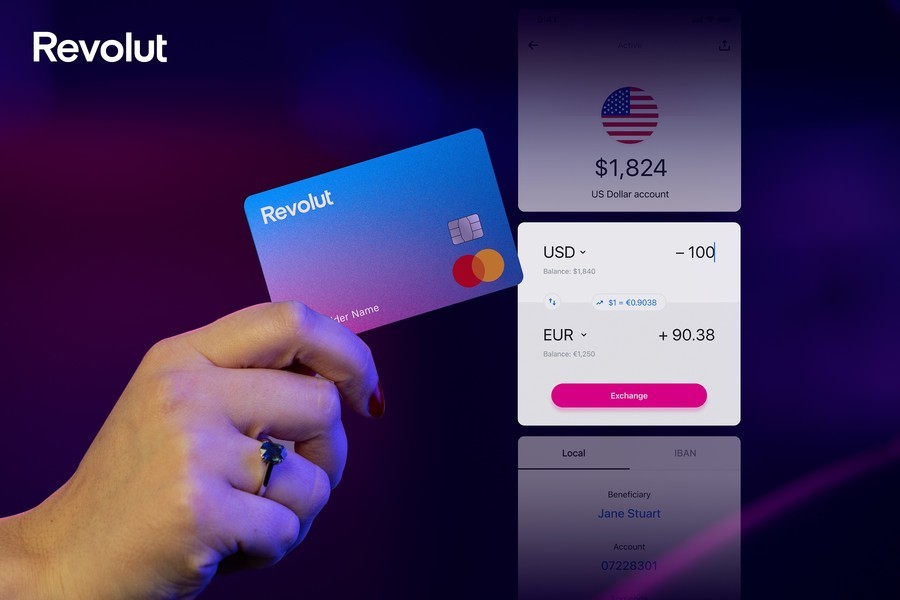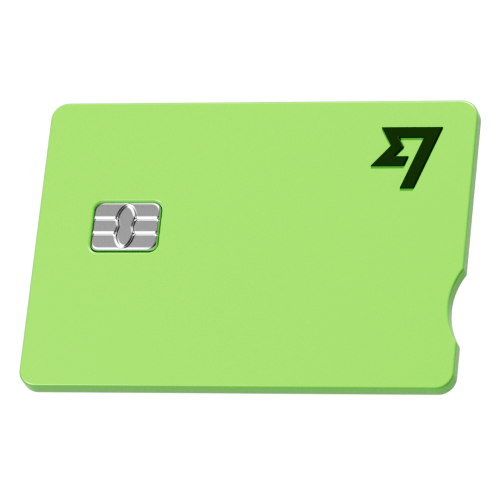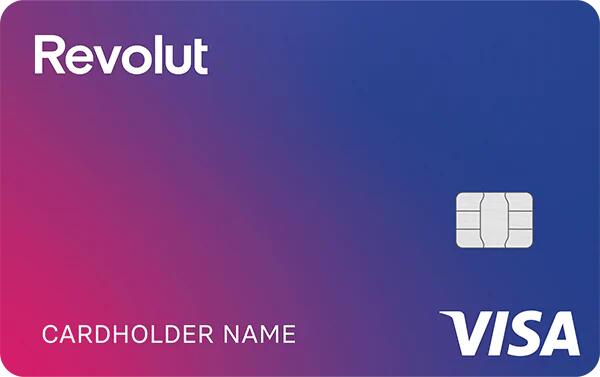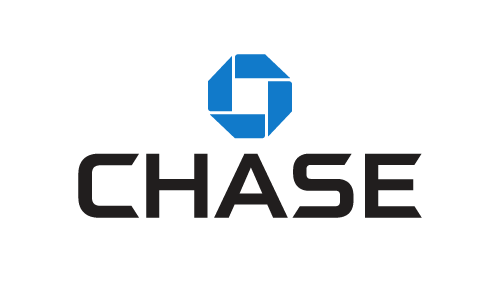How to avoid international ATM fees in 2026
Having some cash in your pocket when you travel is reassuring – and in some countries where card payments are less common, it may be essential. However, using an ATM abroad can mean you run into international ATM fees, including a withdrawal charge and foreign transaction fee.
In this guide we’ll cover ways to limit or avoid international ATM fees, including 4 providers like Wise or Revolut that have some no fee international ATM withdrawals, and a quick look at the foreign ATM fees from Chase and Wells Fargo.
How much is the international ATM fee?
It’s not often possible to get completely free international ATM withdrawals. Different banks and non-bank alternative card providers have their own fee schedules which can include several different charges. On top of that, the ATM operator might also add their own charge. It’s important to check your own card’s terms and conditions to understand what charges will apply, and so you don’t run into any surprise costs.
Types of international ATM fees
Several different international ATM fees may apply to a single withdrawal, so looking through your car’s fee schedule is essential. Keep an eye out for costs including:
Foreign transaction fees: This is a percentage charge added to all transactions made in foreign currencies – banks often have a foreign transaction fee of around 3%
Out-of-network ATM fees: Out of network fees may apply when you use an ATM overseas – these charges can vary and are often around 5 USD
Currency conversion fees: You may pay a currency conversion charge, which will be a percentage added to the exchange rate used to switch your dollars to the currency needed in your location
ATM withdrawal service fees: Both your own bank or card issuer, and the ATM operator, might charge an ATM fee, which is usually higher if you’re abroad
How can I avoid cash withdrawal fees abroad?
So – how to cut down the costs of using an ATM overseas? You may not be able to completely eliminate the fees you pay when transacting internationally, but there are some smart ways to limit the costs:
See if your bank has an overseas ATM network you can use: Most US banks do not charge for ATM withdrawals made using a debit card, at in-network ATMs. While some banks only have local US ATMs, others have options overseas, or work with other banks to provide free or discounted withdrawals for their customers
Choose a card that doesn’t have foreign ATM fees: Some US bank accounts offer debit cards with no overseas ATM fees, although you may need to pay a monthly maintenance charge for this perk. As an alternative, check our services like Wise or Revolut which both have accounts with no ongoing fees and some no-fee ATM withdrawals every month.
Don’t use the ATM too frequently: If your bank card has a flat fee for making an ATM withdrawal, taking out money more frequently means paying the fee more frequently too. If you have somewhere safe to store cash, such as a hotel safe, consider taking out larger amounts – and using your card to make payments where you can
Avoid dynamic currency conversion: Pay in the local currency wherever you are when you make an ATM withdrawal. This will allow you to get the best available exchange rate. Or, get a multi-currency account from a provider like Wise or Revolut, which lets you hold dozens of currencies and convert with low or no fees
We’ll look at the international ATM fees from 4 banks and non-bank providers in detail next.
Banks with no international atm fees
Some banks have cards that have no international ATM fees, or offer fee-free withdrawals up to certain limits. However, it’s pretty common for some fees to apply when using a bank debit card in an ATM abroad – and using a credit card can be even more costly.
Specialist providers like Wise ad Revolut offer debit cards with no-fee ATM withdrawals up to certain limits, at home and internationally.
In this section we’ll cover Wise and Revolut as specialist providers, as well as Chase and Wells Fargo, looking at their ATM fees and limits. First, a quick overview:
| Provider/fee | International ATM fee | Exchange rate | Foreign transaction fee |
|---|---|---|---|
| Wise | Wise won’t charge a fee for the first two ATM withdrawals each month if the total combined withdrawal amount does not exceed $100. After $100 is withdrawn in a month, any amount in excess will be charged a 2% fee. After your first 2 withdrawals, there’s a $1.50 charge per withdrawal. The ATM operator may charge their own fees | Mid market rate with low cost currency conversion from 0.42% | No foreign transaction fee |
| Revolut | Standard account holders can withdraw up to 400 USD a month with no Revolut fee – fee of 2% after that | Mid market rate Monday – Friday to account limits 0.5% fair usage fee when limit exhausted 1% out of hours conversion fee | No foreign transaction fee |
| Wells Fargo
| 5 USD | Network rate | 3% |
| Chase
| 5 USD | Network rate | 3% |
*Please see Terms of Use for your region or visit Wise Fees & Pricing for the most up to date pricing and fee information.
As you can see, the banks we’ve compared here do charge an international ATM fee, and also have a foreign transaction fee for most standard accounts. It’s worth checking if your bank has a card option with no international ATM fees available, as some accounts do offer this benefit, particularly if you have a premium tier account. Or, pick a non-bank alternative like Wise or Revolut to maximize your overseas cash with low fees.
Wise international ATM fees
You can use your Wise Multi-Currency Card in an ATMs overseas for low-cost cash withdrawals with mid-market exchange rate.
Wise won’t charge a fee for the first two ATM withdrawals each month if the total combined withdrawal amount does not exceed $100. After $100 is withdrawn in a month, any amount in excess will be charged a 2% fee. After your first 2 withdrawals, there’s a $1.50 charge per withdrawal (The ATM operator may charge their own fees).
If you have the currency you need in your Wise account there’s no conversion fee – and if not, the card can automatically convert from your balance, with low fees from 0.42%.
There’s no foreign transaction fee to pay, which cuts down the overall cost of using your Wise account internationally. Wise accounts have some ATM limits which are set for security. You can manage and view these in the Wise app. You’ll be able to withdraw up to 1,000 USD a day or 6,000 USD a month from your US Wise account.
Learn more on How to use Wise Multi-Currency Card abroad.

Revolut international ATM fees
Revolut accounts all come with a linked debit card you can use for ATM withdrawals more or less globally. If you have a Standard Revolut account you can withdraw up to 400 USD a month with no Revolut fee, after which a 2% charge kicks in. You’ll also be able to convert currencies in market hours to the value of 1,000 USD a month without needing to pay a fee – once you’ve exhausted this allowance a fair usage charge of 0.5% begins. You can make up to 3,750 USD in withdrawals every 24 hours.
Different account tiers may have their own no-fee transaction allowances and limits, so do check the terms of the account type you pick before you make your first withdrawal.

Wells Fargo international ATM fees
Wells Fargo does not charge a fee when you make cash withdrawals at a Wells Fargo branded ATM with your debit card – but fees apply when you use international or out of network cash machines. There’s a 5 USD fee to make an international ATM withdrawal, and a 3% foreign transaction fee. It’s also worth knowing that there’s a 2.5 USD fee to check your balance at an ATM abroad – so using online or mobile banking is a better way to keep an eye on your money.
Some Wells Fargo accounts have different fees, or may have card fees waived under certain circumstances – check your own account terms and conditions to get all the most up to date information. Credit cards from Wells Fargo may have different international ATM fees, including cash advance charges.
Learn more about Wells Fargo international card fees here.
Chase international ATM fees
If you have a Chase debit card you’ll pay a 5 USD fee to make an international ATM withdrawal, plus a 3% foreign transaction fee. If you need to use an ATM to check your balance, that will cost 3 USD. The ATM operator may also add their own fees if you’re using an out of network ATM, which is usually shown on screen before you confirm your withdrawal.
Different Chase accounts have their own ATM debit card limits, and in some cases fees may vary so it’s worth checking your specific account terms and conditions before you start to transact. Credit card fees tend to be higher when making an ATM withdrawal, and can include cash advance charges and interest.
Learn more about Chase international card fees.
What is the best way to withdraw money in a foreign country?
There’s no single best way to get your hands on travel cash when you’re away from home – however, choosing a debit card which has low or no ATM fees can help you manage your money with lower overall costs. Choose an account with multi-currency functions, such as those from Wise or Revolut, and you can also hold and exchange the currencies you need for your trip, so you can see your budget in advance.
How to avoid ATM fees in Europe
Got a big trip planned? Here are a few pointers on avoiding ATM fees when you’re in Europe:
- Get a low cost multi-currency card from a provider like Wise or Revolut, to make low or no fee withdrawals in foreign currencies
- See if your home bank has partnerships with banks in Europe, which can mean snagging low or no cost ATM withdrawals
- Don’t use a credit card – ATM withdrawals are treated as a cash advance and usually come with hefty fees and instant interest to pay
💡 Check our foreign transaction fee guides for major US banks to find out if your card has international transaction fees:
Chase Card Foreign Transaction Fees | American Express Foreign Transaction Fees | Discover Card Foreign Transaction Fees | Capital One Foreign Transaction Fees | Wells Fargo Card Foreign Transaction Fees
Conclusion: How to avoid ATM withdrawals fees abroad
Many US banks have debit cards which come with an international ATM fee if you need to get cash out as you travel. While some accounts from banks like Chase and Wells Fargo may waive international ATM fees, you’ll often find a flat charge of around 5 USD, plus a 3% foreign transaction fee.
As an alternative take a look at multi currency accounts from specialist providers like Wise or Revolut, which come with linked debit cards that have some no fee ATM withdrawals every month. You can add money easily in USD, and then convert to the currency you need conveniently within your account, so you’ll know exactly what you have to spend while you’re away – or just let the card handle the conversion when you pay.
International ATM fees FAQs
Is it better to exchange currency or withdraw from an ATM?
Exchanging currency before you travel can be time consuming and may not get you the very best exchange rate out there. Using an ATM can be convenient and if you pick an account which has a low or no cost currency exchange, you may also get a better deal on fees. Take a look at options from Wise or Revolut to see if they might suit your needs.
Will I get charged for withdrawing money abroad?
Your own bank or card provider will set the fees you pay for international ATM withdrawals – often banks have a 5 USD flat fee, and a foreign transaction fee of 3%. The ATM operator may also charge a fee. Take a look at your account and card fee schedule to see what charges apply, and compare the costs with alternative account options including specialist alternatives like Wise or Revolut.
Learn more: Best cards with no foreign transaction fees
Can I use my debit card abroad to withdraw cash?
Yes. Use your debit card in an ATM which supports the card network – Visa or Mastercard, for example. You may need to inform your bank you plan to travel to make sure your card is activated for international use before you leave.





